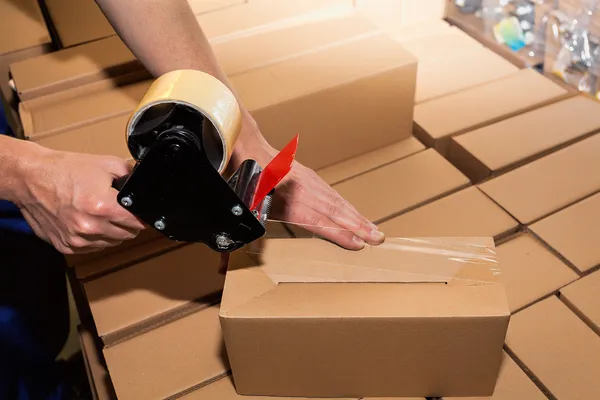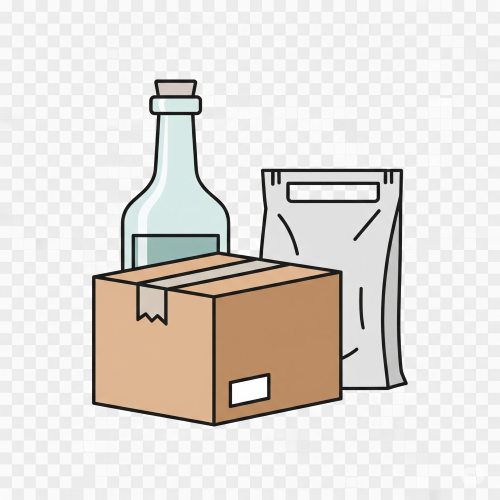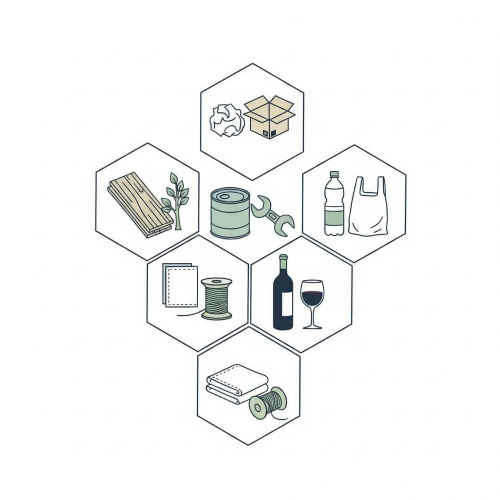PACKAGE DESIGN
Introduction to Package Design
A package is a container, wrapper, or casing used to hold a product. It could be a bottle, box, sachet, carton, can, or bag.
Packaging is the process of designing and producing the container or wrapper for a product. It helps to protect, promote, and preserve the product. A good package is attractive and makes people want to buy the product.
Meaning of Package Design
Package design refers to the process of creating a container, wrapper, or label for a product. It involves combining art, design, and marketing to make a package that is both functional (protects the product) and appealing (attracts buyers). Package design is an important part of visual communication in commercial art.
Materials Used for Packaging
The choice of material for packaging is essential because each material has specific properties that make it suitable for a particular purpose.
- Paper and Cardboard – Used for making boxes, labels, and wrappers.
- Plastic – Used for bottles, bags, and containers.
- Metal – Used for making cans and tins.
- Glass – Used for making bottles and jars.
- Textile/Fabric – Used for wrapping some items.
- Wood – Used for crates and heavy packages.
Functions of Packaging
- To protect the product from damage or spoilage.
- To preserve the freshness of food and drinks.
- To advertise the product.
- To attract buyers by making the product look beautiful.
- To inform the user about how to use the product.
- To make handling easy for transport and storage.
Importance of Package Design
- It helps to make the product look neat and organized.
- It makes the product more attractive to buyers.
- It increases the sales of the product.
- It shows that the product is valuable and of high quality.
- It gives information about the product.
Elements of Package Design
These are the things used to make a good package:
- Shape – The form or structure of the package (e.g., round, square, cylinder).
- Color – Used to catch attention and show meaning.
- Illustration – The pictures or drawings on the package.
- Typography – The way the words are written (font, size, style).
- Label – The part that gives information like name, ingredients, and expiry date.
- Caption – A short and catchy phrase used to promote the product.
Caption
Meaning of Caption
A caption is a short sentence or phrase written on the package to advertise or attract people to the product. It is also called a slogan .
Examples of Captions:
- “Tastes great!”
- “New and improved!”
- “Now with extra power!”
- “Feel the freshness!”
- “Now fortified with vitamins!”
- “Natural and Organic”
- “Buy 1, Get 1 Free”
- “For Stronger Teeth and Bones”
Steps in Designing a Package
- Know the product and its use.
- Choose the shape and material of the package.
- Make a sketch or drawing of the package.
- Add color and illustrations.
- Write the label and caption clearly.
- Test your design before using it for many products.
Types of Packaging
- Primary packaging: Holds the product directly (e.g., sachet of milk).
- Secondary packaging: Holds the primary packages (e.g., carton of sachets).
- Tertiary packaging: Used for transporting in bulk (e.g., crates).
Eco-Friendly Packaging
Students should learn that plastic waste is dangerous to the environment. Modern package designers use:
- Recyclable materials (like paper or cardboard).
- Biodegradable wrappers.
- Reusable containers.
Traditional Nigerian Packaging
- Banana leaves used to wrap moi-moi.
- Calabashes used to carry water.
- Woven baskets used in rural markets.
Careers Related to Package Design
- Graphic designer.
- Commercial artist.
- Product designer.
- Advertising officer.
- Illustrator.



